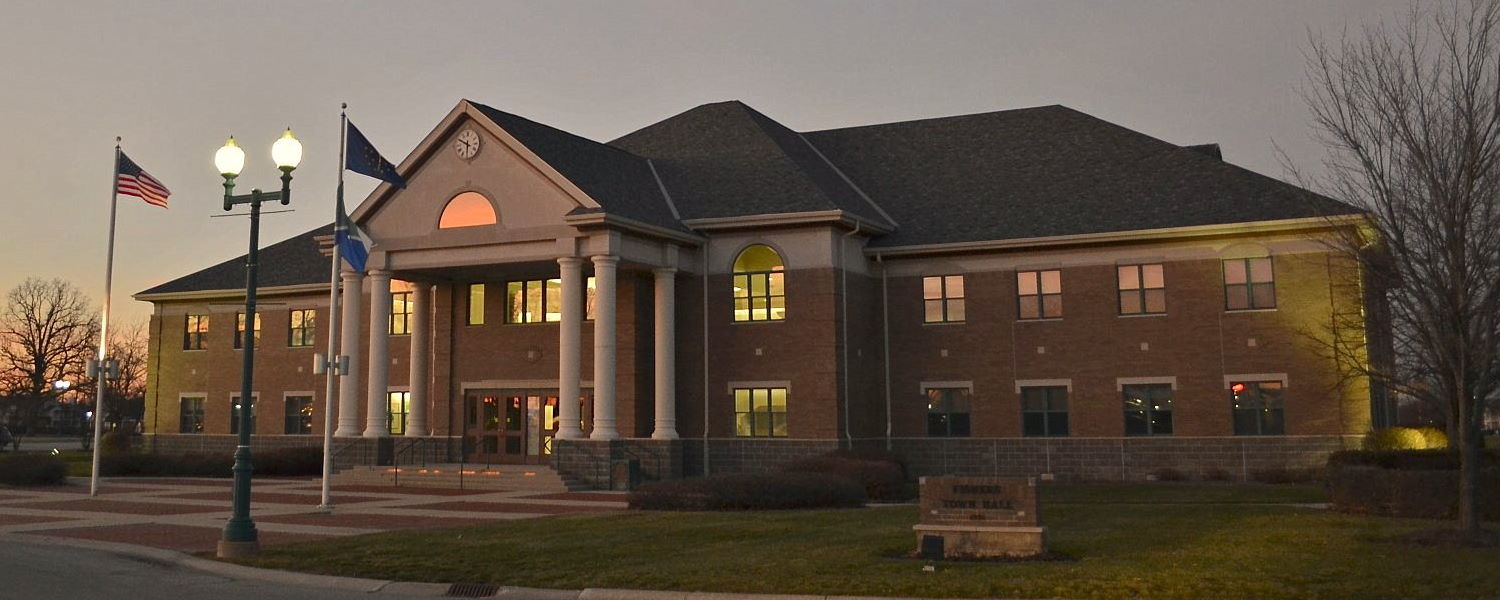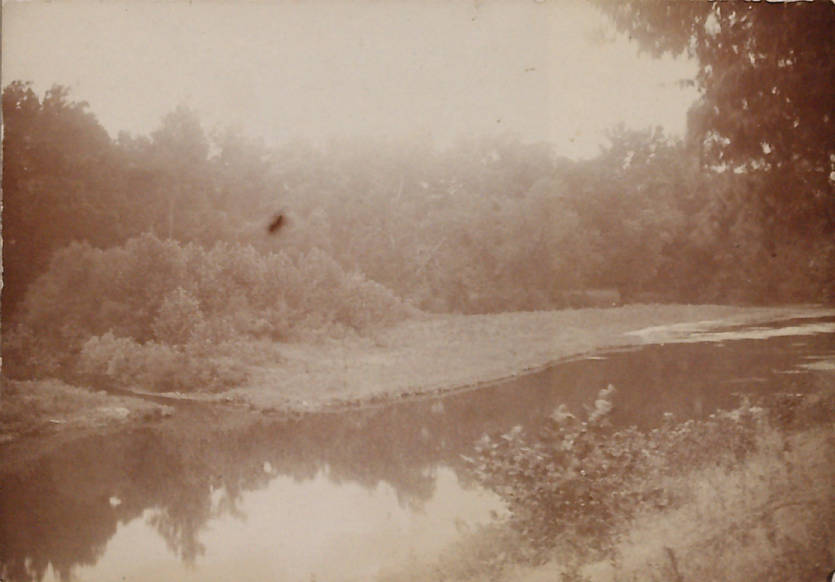Since the early 1990s, the Hamilton County town of Fishers, centered between I-69/S.R. 37 and Allisonville Road northeast of Indianapolis, has been one of the fastest-growing areas in the metropolitan region.

Initially a settlement near an Indiana trading post, the southern part of was lightly settled during the first half of the 19th century. Population centers were small crossroads communities like , Bethlehem (now ), and Cynthiana. The main transportation corridor was Allisonville Road, which was the route for the regular stagecoach. home was a landmark and a stopping point along the road.
Everything changed in 1851 with the arrival of the Peru and Indianapolis Railroad. The town of New Brittain was established where the railroad crossed Big Branch Creek directly east of the Conner home.
After the Civil War, a great deal of effort was put forth to improve the roads in Hamilton County. One road was built along the east-west township survey line two miles north of the county border, which later became known as 116th Street. While most of the roads were gravel, the soil where the road crossed the railroad track was low and swampy, and it became necessary to build a plank road. Because of the construction effort, this became, by default, one of the better east-west roads in the southern part of the county.
Salatheil Fisher, a blacksmith and wagon maker who had moved from Ohio to Hamilton County in 1852, purchased the land adjacent to the railroad track on the north side of the plank road. In 1869, the county commissioners voted to build a bridge across along the same township line as the plank road. This was a covered bridge known as the Eller and Heady Bridge. Then, in 1871, the railroad line was completed to Michigan City. These two things connected farmers on the east and west sides of the White River to Chicago and made shipping much easier.

Fisher established the town of Fisher’s Switch in 1872. He died a year later, and it was left to his son Henry to develop the town. Because of the swampy nature of the soil, the community acquired the nickname of “Mudsock.”
The community resembled a western frontier town during its initial years, with shootouts, prize fights, and bombings. A feud between two saloons caused a massive brawl in 1881, leaving 1 dead, 32 injured, and two buildings burnt.
The national press dubbed it the “Battle of Mudsock.” The area was again in the national news when it was the center of a grave robbing scandal 20 years later.
When the was built through the western part of the county in 1882, it offered a more direct route to Chicago and, as a result, the town of Fishers began to receive less traffic. The town was largely bypassed by the natural gas boom and remained dependent on shipping farm goods for its economic livelihood. It officially incorporated as a town in 1891. In an attempt to shed its rough reputation a newspaper article from 1907 announced quite firmly that “’Mud Sock” is not an appropriate name.”
In the early 20th century, Fishers remained a quiet agricultural community. purchased William Conner’s farm in 1934, restored it, and in 1964 asked Earlham College to oversee the farm, now known as .
Delaware Township split at the river in 1955 eliminating westward growth, and Eller bridge burned in 1957. The first substantial housing development occurred in the mid-1950s when several modest ranch-style homes, a few storefront businesses, and a school were constructed. Still, by 1960 the population was only 344 and the town offered neither sewers nor fire and police protection.
In 1943, the constructed to address a potential water shortage in Indianapolis. Fall Creek and White River were considered incapable of meeting Indianapolis’s future water demands. The water company’s attempt to triple the reservoir’s size was rejected in 1978, which led to home construction around the body of water.
The construction of I-69 brought a building boom to Fishers in the 1970s. In 1972, the three-person town board government annexed 1,400 acres of surrounding land. Housing developments and schools, notably the Hamilton Southeastern school district grew up concurrently. The number of residents in 1980 reached 2,000. In the mid-1980s, the 3,000-home Sunblest Farms development brought a surge in population. The number of local businesses grew from 30 in 1980 to over 250 by 1991, including the 1,300-employee complex located along I-69. Traffic congestion and concerns over future development increased.
In the early 1990s, the town board added two additional members and appointed a steering committee to define town needs, problems, and future expansion. In 1998, proponents in favor of changing Fishers’ status from a town to a city were met with fierce opposition due to concerns over an already stressed infrastructure resulting from the population growth and worries about the drawbacks of a change of government type.
Fishers continued to expand in 2009. Initially, Fishers began annexing Fall Creek Township in 1986. In 2009, Fishers annexed a continuous, unincorporated area around Geist Reservoir against the wishes of the Geist United Opposition group. This annexation brought 2,200 homes in Fall Creek Township into Fishers’ taxing district in 2011 and made Fishers the eighth-largest community in Indiana.
Still debating whether to classify as a town or a city, in 2012, voters rejected the proposal to become a modified city, opting for “second-class” status. The former would have merged Fishers with Fall Creek Township and resulted in a mayor-appointed from among an expanded nine-member city council. Fishers finally incorporated as a second-class city on January 1, 2015, with Scott Fadness, the then-town manager, elected as the city’s first mayor.

Fishers has invested heavily to develop its downtown into a walkable district on par with Carmel. In 2012, a multi-purpose trail and amphitheater development named the Nickel Plate District and amphitheater was followed by the development of a major entertainment and commercial zone with the construction of TopGolf, IKEA, Target, and numerous eateries straddling the Fishers exit off interstate 69. Major employers include Navient Corporation and Corporation.
These developments have earned Fishers several designations as one of the top US cities for livability. Its population has increased as a result, with a population of 98,977 in the 2020 census, making it the second largest city in Hamilton County. Fishers has about 1,000 fewer residents than Carmel.
The Hamilton Southeastern School District serves Fishers, with 1 preschool, 13 elementary schools, 2 intermediate schools, 4 junior high schools, and 2 high schools.

Is this your community?
Do you have photos or stories?
Contribute to this page by emailing us your suggestions.